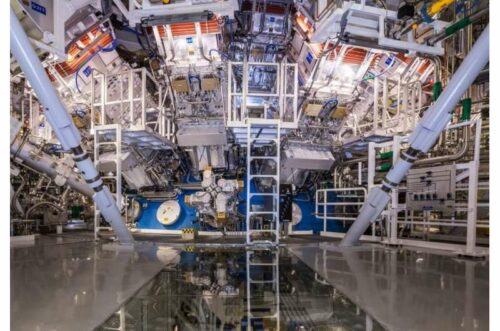Researchers at the National Ignition Facility (NIF) at Lawrence Livermore National Laboratory have successfully generated more energy than used to create fusion energy.

Scientists around the world have been attempting to harness thermonuclear fusion-the power source of burning stars-to generate energy. The problem, until now, with generating fusion energy was that it did not offer enough output with respect to the inputs it demands. But now, scientists have hailed a “true breakthrough” as a fusion reaction has successfully generated more energy than was used to create it.
A team of researchers at the National Ignition Facility (NIF) at Lawrence Livermore National Laboratory have achieved success in producing more energy than the laser pulse that was used to heat the fuel. Imperial College London physicists are already helping to analyze the data from the successful experiment
“To turn fusion into a power source we’ll need to boost the energy gain still further. We’ll also need to find a way to reproduce the same effect much more frequently and much more cheaply before we can realistically turn this into a power plant. It’s hard to say how quickly we might be able to get to that point. If everything aligns we could see fusion power in use in ten years, but it could take far longer. The key thing is that with today’s results we know that fusion power is within reach,” said Professor Jeremy Chittenden, Co-Director of the Centre for Inertial Fusion Studies at Imperial College London.
Fusion forces atoms of hydrogen together, producing a large amount of energy, and, crucially, limited radioactive waste. Researchers worldwide are using two main ways to produce fusion energy. The NIF focuses on inertial confinement fusion, which uses a system of lasers to heat up fuel pellets producing a plasma—a cloud of charged ions. The fuel pellets contain “heavy” versions of hydrogen—deuterium and tritium—that are easier to fuse and produce more energy. However, the fuel pellets need to be heated and pressurized to conditions found at the center of the sun, which is a natural fusion reactor.
Once these conditions are achieved, fusion reactions release several particles, including alpha particles, which interact with the surrounding plasma and heat it up further. The heated plasma then releases more alpha particles and so on, in a self-sustaining reaction—a process referred to as ignition.





